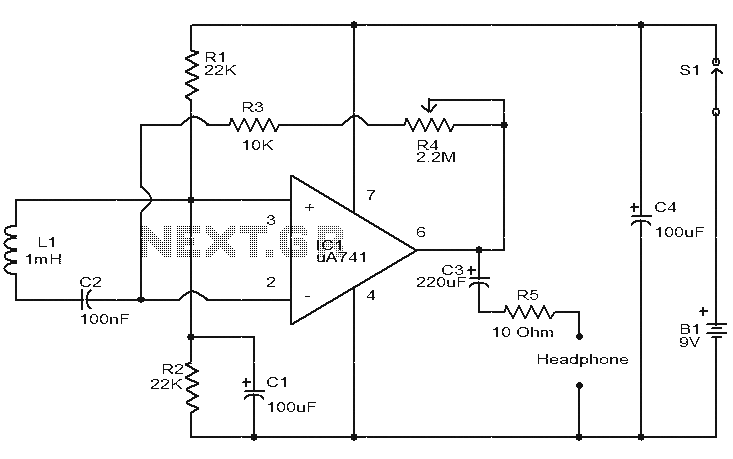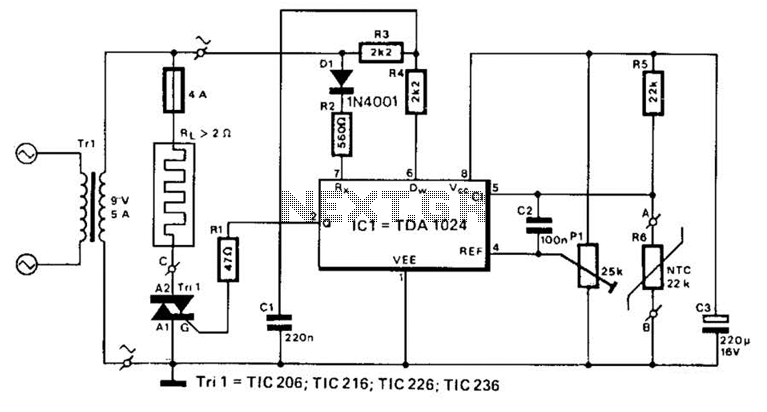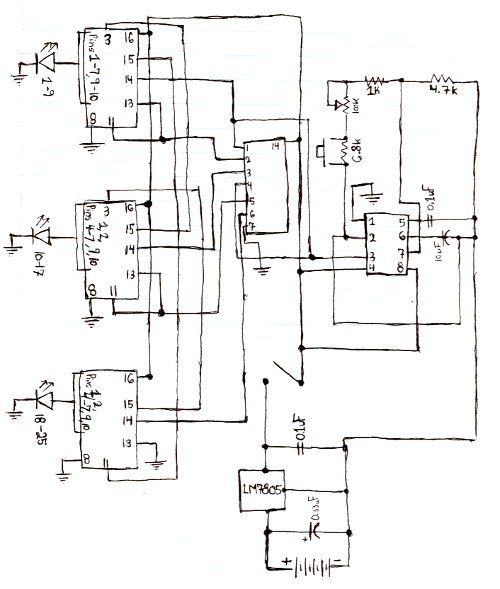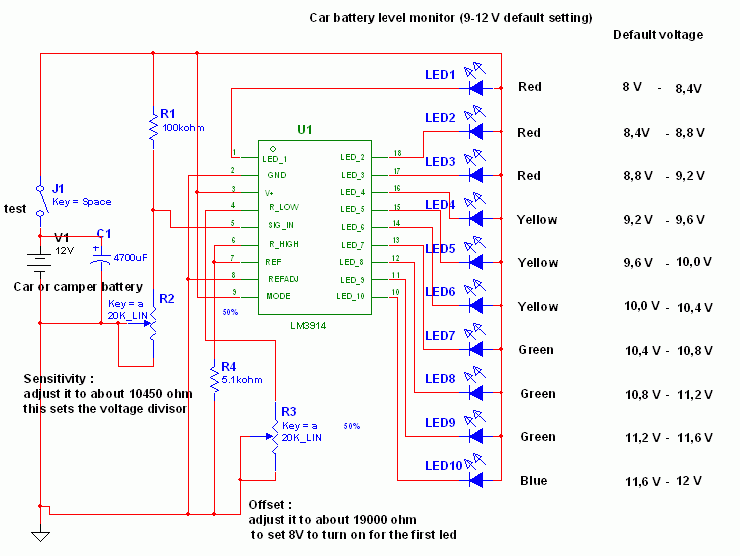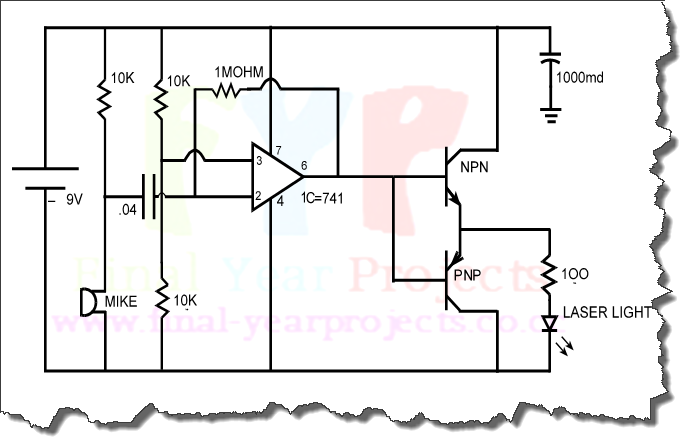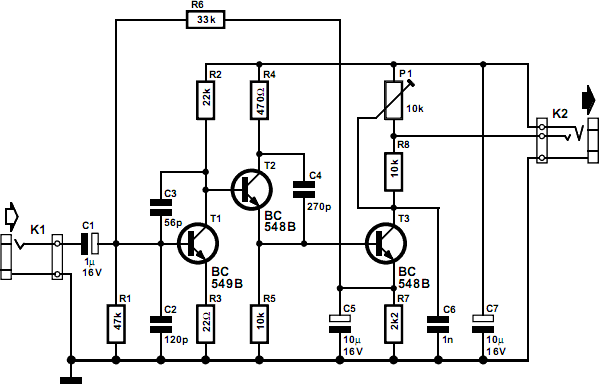
Quartz crystal tester circuit
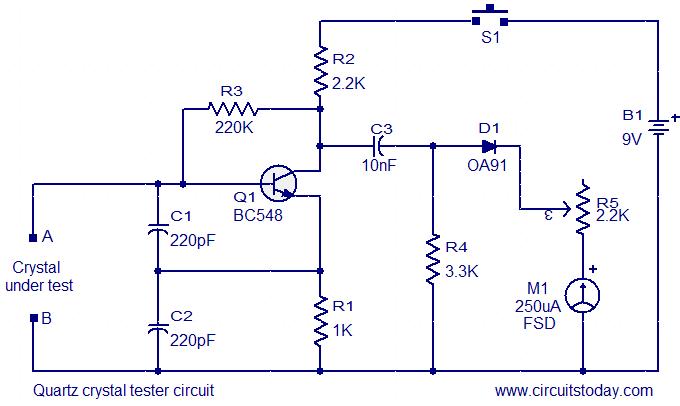
This is a straightforward and cost-effective circuit designed for testing quartz crystals. A Colpitts oscillator is employed using transistor T1. When the crystal is connected between terminals A and B, the circuit generates high-frequency oscillations. These oscillations will only occur if the crystal is functioning properly. The diode OA91 rectifies these oscillations, which can be visually indicated on a meter. The deflection of the meter corresponds directly to the activity of the crystal.
The circuit utilizes a Colpitts oscillator configuration, which is known for its stability and simplicity in generating oscillations at high frequencies. The oscillator is formed by the transistor T1, which acts as an amplifying element, and a combination of capacitors and an inductor (or a quartz crystal) that sets the frequency of oscillation.
In this design, the quartz crystal is connected between terminals A and B, effectively becoming part of the feedback network of the oscillator. The crystal's inherent properties determine whether the circuit will oscillate; a good crystal will allow oscillation at its fundamental frequency, while a defective or broken crystal will not produce any oscillation.
The output from the oscillator is an alternating current (AC) signal, which is then fed into the diode OA91. This diode functions as a rectifier, converting the AC signal into a direct current (DC) signal. The rectified output can be connected to a meter, such as an analog or digital voltmeter, which measures the amplitude of the resulting DC signal. The meter's deflection provides a visual indication of the crystal's performance; a higher deflection indicates a more active and functional crystal.
In summary, this circuit serves as an effective tool for testing quartz crystals, providing a clear and immediate visual representation of the crystal's operational status through the use of a Colpitts oscillator and a rectifying diode.This a very simple and inexpensive circuit that can be used to test quartz crystals. Here a Colpitts oscillator is wired used the transistor T1. When the crystal is connected between terminals A and B the circuit will produce high frequency oscillation. The oscillations will be generated only if the crystal is a good one. The diode OA91 will rectify t hese oscillations and it can be visually identified from the meter. The deflection of the meter will be directly proportional to the activity of the crystal. 🔗 External reference
The circuit utilizes a Colpitts oscillator configuration, which is known for its stability and simplicity in generating oscillations at high frequencies. The oscillator is formed by the transistor T1, which acts as an amplifying element, and a combination of capacitors and an inductor (or a quartz crystal) that sets the frequency of oscillation.
In this design, the quartz crystal is connected between terminals A and B, effectively becoming part of the feedback network of the oscillator. The crystal's inherent properties determine whether the circuit will oscillate; a good crystal will allow oscillation at its fundamental frequency, while a defective or broken crystal will not produce any oscillation.
The output from the oscillator is an alternating current (AC) signal, which is then fed into the diode OA91. This diode functions as a rectifier, converting the AC signal into a direct current (DC) signal. The rectified output can be connected to a meter, such as an analog or digital voltmeter, which measures the amplitude of the resulting DC signal. The meter's deflection provides a visual indication of the crystal's performance; a higher deflection indicates a more active and functional crystal.
In summary, this circuit serves as an effective tool for testing quartz crystals, providing a clear and immediate visual representation of the crystal's operational status through the use of a Colpitts oscillator and a rectifying diode.This a very simple and inexpensive circuit that can be used to test quartz crystals. Here a Colpitts oscillator is wired used the transistor T1. When the crystal is connected between terminals A and B the circuit will produce high frequency oscillation. The oscillations will be generated only if the crystal is a good one. The diode OA91 will rectify t hese oscillations and it can be visually identified from the meter. The deflection of the meter will be directly proportional to the activity of the crystal. 🔗 External reference
